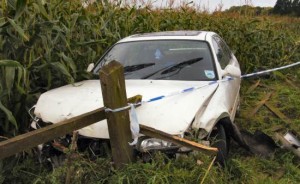 Chances are that you will have an accident at some time in your life, either as a passenger or driver, and it may or may not be your fault. This article will tell you what steps you should take if you are either involved in an accident, or you come across an accident.
Chances are that you will have an accident at some time in your life, either as a passenger or driver, and it may or may not be your fault. This article will tell you what steps you should take if you are either involved in an accident, or you come across an accident.
To be prepared to deal with an accident you have to consider the scenarios. It can be any weather, any vehicle type, and a range of results from minor injuries through to death. While vehicle safety systems are getting better and better, we won’t stop having accidents until computers are fully in control of our cars. That will happen eventually. In the meantime, though, here’s what to do to.
If you have a crash
Stop immediately.
Put your hazard warning lights and headlights on. This will help warn other motorists and will light the scene if it’s dark
Check if there are any injuries. See below for specific advice.
Uninjured occupants can be sent up the road to warn other drivers. If warning triangles are available, take these and put them 100-200m each side of the accident
Call triple zero (000 or 112) for emergency services if required. They will need to know the location, number of people injured and what type of injuries, if any people are trapped, whether emergency vehicles are required on the scene, whether there are any downed power lines, and whether any hazardous goods are involved.
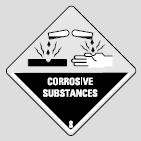
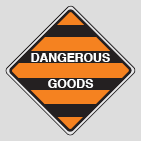
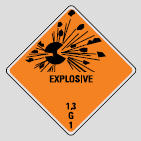
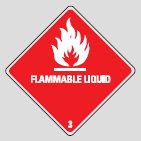
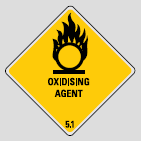
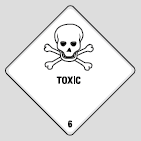
The hazardous good signs will be on the back of any vehicles that are carrying goods which could pose a danger. They include corrosive, explosive, flammable, toxic and other chemically reactive substances. If hazardous goods are present, stay well away from the crash scene as breathing toxic fumes could cause injury or death.
If it’s a minor accident and the vehicles can be moved out of the way, move them off the road to allow other traffic to pass. You can take a photo on a cellphone for insurance purposes. Police don’t need to be notified if there are no injuries and the vehicles don’t need to be towed.
If you are involved in an accident where your vehicle needs to be towed away and the Police do not attend the crash scene, you must report the accident to the Police Station nearest to where the accident happened within 24 hours.
If your vehicle is involved in the accident (regardless of the damage) the details you must give to the other drivers (if asked) are your licence details and the name and address of the vehicle’s owner. This ensures that all parties have the correct details for insurance purposes.
Dealing with injuries
Check if there are any unconscious people. Check their airway is clear. Only move them if they are in immediate danger as they could have serious injuries which are possible to make worse. Be careful not to twist their neck or back.
To clear the airway, turn the victim onto their side, tilt the head back, point the face to the ground and clear their mouth with your fingers. Check that they are breathing.
If they are not breathing and/or there is no pulse, start cardiopulmonary resuscitation. While Roads and Maritime guidelines recommend expired air resuscitation (EAR – a fancy name for mouth-to-mouth resuscitation), many health agencies around the world now recommend only using cardiopulmonary resuscitation (CPR), in whereby you push down on the chest rhythmically to activate the lungs and heart. If you are trained in first aid and are comfortable with EAR, then do it; if not, stick to CPR.
For any conscious people, stem any major bleeding and support broken limbs. Apply direct pressure to wounds using thick, folded fabric and elevate the body part affected if possible. Only use a tourniquet if you know what you are doing. Avoid getting the victim’s blood on any parts of your skin that are broken.
Never give an accident victim food or drink.
If you come across an accident
There are a number of signs to look out for when coming up to an accident. Some of them may seem implausible, and others are obvious. One example was a Down’s Syndrome child waving frantically at me from a quad bike on the side of the road. I didn’t know what to make of this, so slowed down a little. As I rounded the next corner the road was completely blocked with a truck pulling another truck out of the ditch.
Other signs to look for are warning triangles, the flashing lights of emergency vehicles, skids on the road, and ‘accident ahead’ or ‘incident ahead’ signs in yellow and black. If you are in the middle of nowhere and you see suspicious skid marks leading into the bush, with broken foliage, it could pay to check them out if it looks fresh as there could be someone trapped out of sight.
If you are the first on the scene, check for injuries, then call emergency services. Your priority is to first help the injured then to make the approach to the crash scene safe for others.
Park your car off the road, away from the accident area, in a safe position with your hazard warning lights on and your lights on if it’s dark to help illuminate the scene.
It it’s safe to do so, turn the ignition off in any vehicle that’s involved in the accident, but be careful of airbags that haven’t deployed as they can deploy suddenly causing injuries to you.
Uninjured or lightly injured occupants may be disorientated. Move them away from the crash scene to safety and try to prevent them walking around. Don’t move injured occupants unless they’re trapped in a vehicle that looks like it could catch fire, or you need to move them to address a medical emergency such as giving CPR.
Getting a tow truck
If you need a tow truck you, as the driver/owner, can decide where it’s towed to and by whom. You must ensure that the tow truck driver has an accredited licence and you will need to sign a Towing Authorisation Form. All registered tow trucks in New South Wales will have a licence plate with four numbers and then TT, e.g. 4444-TT.
There should be no smoking anywhere near the crash site in case there is leaking fuel.
If emergency services are already attending, resist the risk to rubberneck as you increase your chances of running into the back of another motorist.
